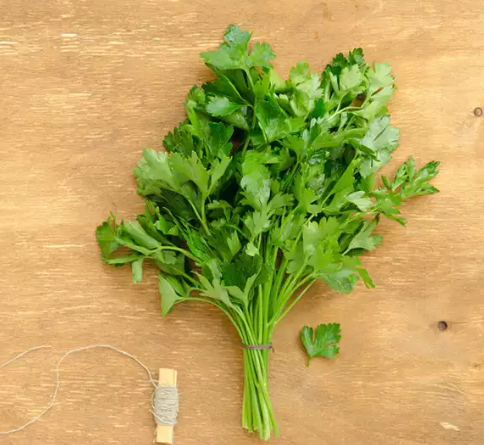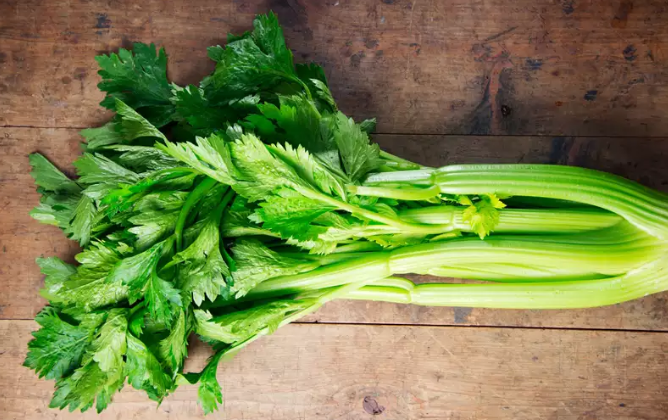Parsley and cilantro might be a little similar in appearance, but they are quite different in flavor, aroma and even their usage. While parsley is used as a garnish for several dishes, coriander leaves have culinary as well as medicinal uses.
What Is Coriander?
Coriander also referred to as Dhania or Cilantro is an annual herb that is native to the Mediterranean and parts of southwestern Europe. It is a delicate plant growing to 50 cm in height and the leaves are variable in shape. Leaves that appear at the base of the plant are approximately lobbed and leaves that appear on the flowering stems are slender and feathery. Its leaves are usually eaten raw as part of salads, salsas, stir-fries and soups, while its seeds are typically dried and ground into a pungent spice.
Coriander is considered as a highly aromatic and flavorful herb with cooking and medicinal uses. The leaves, roots and stems of cilantro can all be used in cooking. The lacy leaves are generally used to flavor savory foods in a number of different national cuisines for example cilantro leaves are used in many Asian and Mexican dishes such as guacamole and Indian chutneys. Cilantro also pairs well with lime, this flavor combo is popular in soups and side dishes like rice. Because cilantro has a strong taste and aroma, it’s usually used in small amounts.
Like all plant foods, cilantro contains fiber, which promotes healthy digestion. Cilantro also displays a variety of properties that may help prevent gastrointestinal infections, inflammation, bloating and heartburn.

What You Need To Know About Coriander
- Coriander also referred to as Dhania or Cilantro is a herb that is native to the Mediterranean and parts of southwestern Europe.
- Cilantro leaves are slightly feathery and differs in shape and sizes and are light green in color.
- All parts of coriander (seeds, leaves and roots) are used in cooking and garnishing for warm and spicy flavor.
- Corianders have flattened leaves.
- Coriander has a strong flavor and aroma.
- Coriander leaves have culinary as well as medicinal uses.
- Coriander leaves are mainly rich in vitamin A , vitamin C, and Vitamin K, with a modest content of minerals. Seeds normally have a lower content of vitamins, but they are rich in dietary fiber and minerals.
What Is Parsley?
Parsley also referred to as garden parsley, a member of the carrot family is a flavorful biennial plant (herb) that originated from the Mediterranean region of southern Italy, Algeria and Tunisia. This herb is a versatile addition to salads, soups and pasta dishes, and a nutrient-rich herb with a bright, fresh taste. It is a staple in certain Middle Eastern recipes and often appears as a garnish in restaurant dishes.
Parsley can easily be found year-round in grocery stores, and can also easily be grown in a home garden. Although there are many types of parsley, the most widely available varieties are curly parsley and Italian, or flat-leaf, parsley.
The curly variety has compact, bright green leaves that furl inward along the edges, while flat-leaf parsley is characterized by smooth, darker leaves that closely resemble cilantro leaves in both shape and size. Italian parsley is more aromatic and flavorful than curly parsley, which is slightly more bitter tasting. While the curly and Italian varieties are cultivated for their leaves, the less common root parsley is grown for its edible root, which looks just like a parsnip. Whereas parsnips taste sweetly spicy, however, root parsley has a more herbal, earthy flavor reminiscent of flat-leaf parsley.

What You Need To Know About Parsley
- Parsley also referred to as garden parsley is a herb that originated from the Mediterranean region of southern Italy, Algeria and Tunisia.
- Parsley leaves are dark green in color and short in length when compared to cilantro leaves.
- Parsley may feel tasteless or mildly bitter to many, but has a warm crunchy texture that goes well with whole wheat dishes, lentils or in salads.
- Parsley have curly or more of ruffled leaves.
- Only the leaves and roots of parsley are used in cooking.
- Parsley is mainly used as a garnish for several dishes.
- Parsley is available in two varieties that is, Curly leaf and Italian Flat leaf.
- Parsley is a rich source of antioxidants such as flavonoid, luteolin and apigenin. It is also rich in folic acid, vitamin K, vitamin C and vitamin A.
Also Read: Difference Between Dinner And Supper
Difference Between Coriander And Parsley In Tabular Form
| BASIS OF COMPARISON | CORIANDER | PARSLEY |
| Scientific Name | Coriandrum sativum | Petroselinum crispum |
| Alternative Name | Dhania or Cilantro | Garden parsley |
| Origin | Native to the Mediterranean and parts of southwestern Europe. | Originated from the Mediterranean region of southern Italy, Algeria and Tunisia. |
| Leaf Color | Leaves are slightly feathery and differ in shape and sizes and are light green in color. | Leaves are dark green in color and short in length when compared to cilantro leaves. |
| Flavor | Coriander has a strong flavor and aroma. | Parsley has a mild flavor and aroma. |
| Parts | All parts of coriander (seeds, leaves and roots) are used in cooking and garnishing. | Only the leaves and roots of parsley are used in cooking. |
| Leaves Shape | Corianders have flattened leaves. | Parsley have curly or more of ruffled leaves. |
| Varieties | Parsley and celery are varieties of Coriander. | Parsley is available in two varieties that is, Curly leaf and Italian Flat leaf. |
| Usage | Coriander leaves have culinary as well as medicinal uses. | Parsley is mainly used as a garnish for several dishes. |
| Mineral Content | Coriander leaves are mainly rich in vitamin A , vitamin C, and Vitamin K, with a modest content of minerals. | Parsley is a rich source of antioxidants such as flavonoid, luteolin and apigenin. It is also rich in folic acid, vitamin K, vitamin C and vitamin A. |